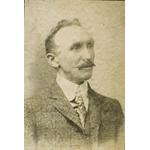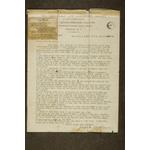The Executed
John MacBride
John MacBride (1868-1916) was born at The Quay, Westport, Co. Mayo, the son of Patrick MacBride, a shopkeeper and trader, and Honoria Gill. He was educated at the Christian Brothers’ School, Westport and St Malachy’s College, Belfast. He worked for a period in a drapery shop in Castlerea, Co Roscommon and later with a firm of wholesale chemists in Dublin. He joined the Irish Republican Brotherhood and was associated with Michael Cusack in the early days of the Gaelic Athletic Association. He also joined the Celtic Literary Society through which he came to know Arthur Griffith who was to remain a friend and influence throughout his life.
In 1896 MacBride emigrated to the Transvaal (the South African Republic) where he worked in a gold mine outside Johannesburg. He was joined by Griffith and in 1898 they were both involved in the commemoration of the 1798 Rising in the Transvaal. McBride provided a focus for the more advanced nationalists in the local Irish community. The following year he had a leading role in organising ‘the Irish Brigade’, a commando force of 300 Irishmen which fought on the side of the Boers in the war with Britain—one of many wars in which Irishmen fought on both sides. MacBride became second in command of the force, holding the rank of major. The force had considerable success in the field and was widely publicised and glamourised in Ireland where it was commonly referred to as ‘MacBride’s Brigade’. MacBride’s reputation was so high in certain circles that in 1900 a group of republican activists put his name forward against the Home Rule candidate at a by-election in South Mayo. He failed, however, to take the seat.
While MacBride had become a citizen of the Transvaal, the British considered that, as an Irishman and citizen of the United Kingdom of Great Britain and Ireland, he had given succour to the enemy. As a result, on leaving the Transvaal he settled in Paris to avoid prosecution. There, he met Maud Gonne who accompanied him on a lecture tour of the United States. They married in May 1903 and had a son, Seán, later to become a distinguished jurist, leader of the political party Clann na Poblachta (the republican party), and minister for foreign affairs. The marriage, however, soon broke up.
Following an amnesty for those involved in the Boer War, MacBride returned to Ireland. He settled in Dublin, taking up a position as water bailiff for the port authority. He resumed some level of political involvement, joining Sinn Fein and serving for a period on the supreme council of the IRB. It seems that he had no involvement with the preparations for the Rising. It is said that on Easter Monday he happened to meet Thomas MacDonagh and his force of Irish Volunteers on their way to take over Jacob’s biscuit factory and that he volunteered his services. He served as second in command to MacDonagh.
Following the surrender on the Sunday, MacBride was taken into custody, tried by court-martial and executed by firing squad on 5 May. He was survived by his son Seán and his former wife Maud.






